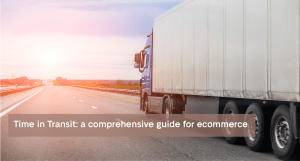Last-mile delivery accounts for 53% of the total cost of shipping, 24% of retailers state that more than one in ten orders aren’t delivered on the first attempt and 65% of all customer complaints are about last-mile delivery. What does this mean for e-commerce? These statistics highlight the significant challenges connected to last-mile delivery, namely high costs and inefficiencies that lead to poor service. Therefore, in this article, we are going to analyse the importance of investing in a high-quality last-mile delivery solutions to reduce costs and improve customer satisfaction.
Last-mile delivery challenges
One of the majour struggles for retailers is gaining clear insight into the last mile of their delivery process. A survey conducted by Bringg in January 2022 revealed that 41% of retailers are struggling using multiple fulfillment channels, employing different technologies for each, thus complicating order management. In fact, 61% of these consider last-mile visibility as their major obstacle in meeting customer expectations, especially when dealing with multiple delivery partners. In fact, a lack of visibility leads to failed delivery attempts, inefficiencies and complaints that increase overall shipping costs significantly.
Despite the crucial role delivery plays in fostering customer loyalty towards a brand, many delivery experiences still fail to meet expectations. This gap highlights how many opportunities lie here for brands to improve their delivery services and gain a competitive edge.
To address challenges connected to last-mile delivery eLogy has grown its fulfillment centres with the aim of positioning inventory closer to customers, increasing delivery speed and reducing delivery costs for companies. Furthermore, eLogy’s platform provides a comprehensive set of technological tools tailored to optimize last-mile delivery performance, like AI-powered route optimization tools that are highly effective in identifying the most cost-efficient delivery routes. These solutions can reduce last-mile delivery costs up to 50%, as well as travelling miles and consequent fuel consumption per order.
eLogy’s solutions to optimise last-mile delivery
– Efficient fulfillment
– Effective AI route-planning
– Optimized inventory management across strategically located fulfillment centres owned by eLogy
– Automatic carrier selection
– Performance management
– Increased visibility in the last mile
– Automatic delivery notifications
The importance of investing in appropriate technologies for enhancing efficiency of last-mile delivery cannot be ignored. By providing live tracking and direct communication features, customers can monitor their orders in real-time and receive live updates, leading to a significant reduction in failed delivery and a complete upgrade to their whole shopping experience.
Last-mile delivery insights
84% of customers would not purchase from a brand again after a negative delivery experience (ProShip)
46% of customers would abandon an online shopping cart due to unsatisfactory delivery estimates (McKinsey & Company)
Top customer complaints in April 2023 according to Project 44: delayed deliveries (24.8%), missing items (22.4%), and damaged items (20.9%)
About 1 in 10 orders aren’t delivered on first attempt
Key Last-mile delivery KPIs to monitor for success
Order Accuracy rate: Total Number of Orders /Number of Correct Orders * 100
Fuel Consumption Rate: this KPI calculates the average fuel consumption for each vehicle per route.
Average Service Time (AST): this KPI calculates the average time spent on order fulfillment, from warehouse pickup to final delivery.
Damage Claims: total number of damage claims / the number of shipments sent.
Time of Delivery: average time to deliver each order.
Total Mileage: this KPI helps identify issues in routing or planning.
Cost per Mile: this KPI calculates the cost for each mile per vehicle.
Capacity Utilization: vehicle’s available capacity / vehicle total carrying capacity. This KPI helps assess routing efficiency.
Unnecessary Stops: This KPI tracks the total number of stops a vehicle makes when delivering an order, which impact fuel consumption and efficiency.
Complaint Details: Total number of complaints / Total number of deliveries made. This KPI helps assess delivery efficiency and the quality of customer experience.





